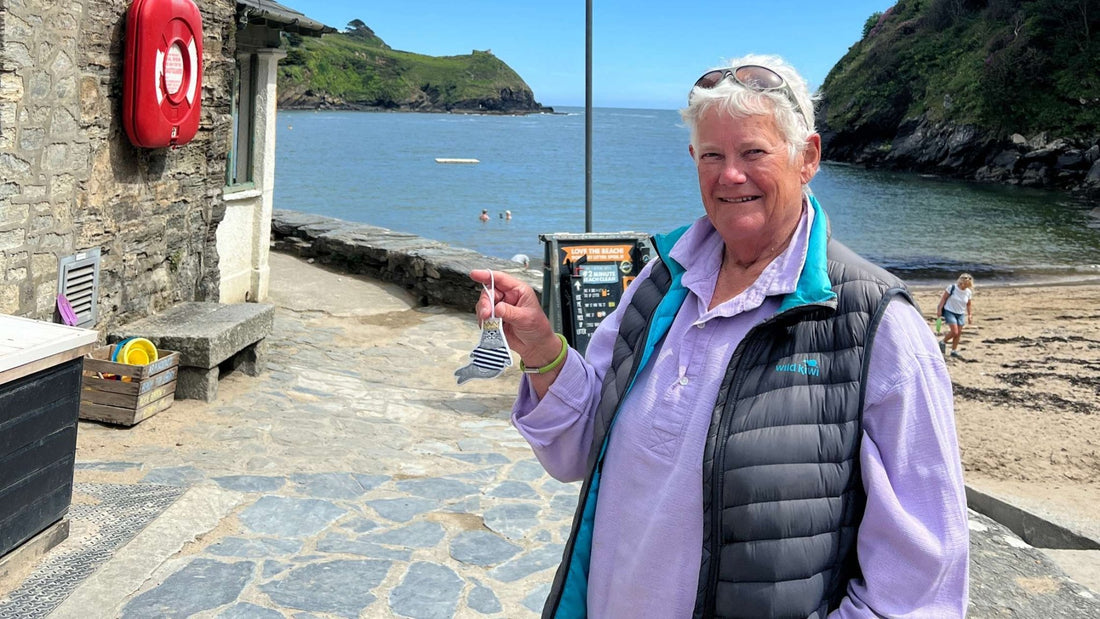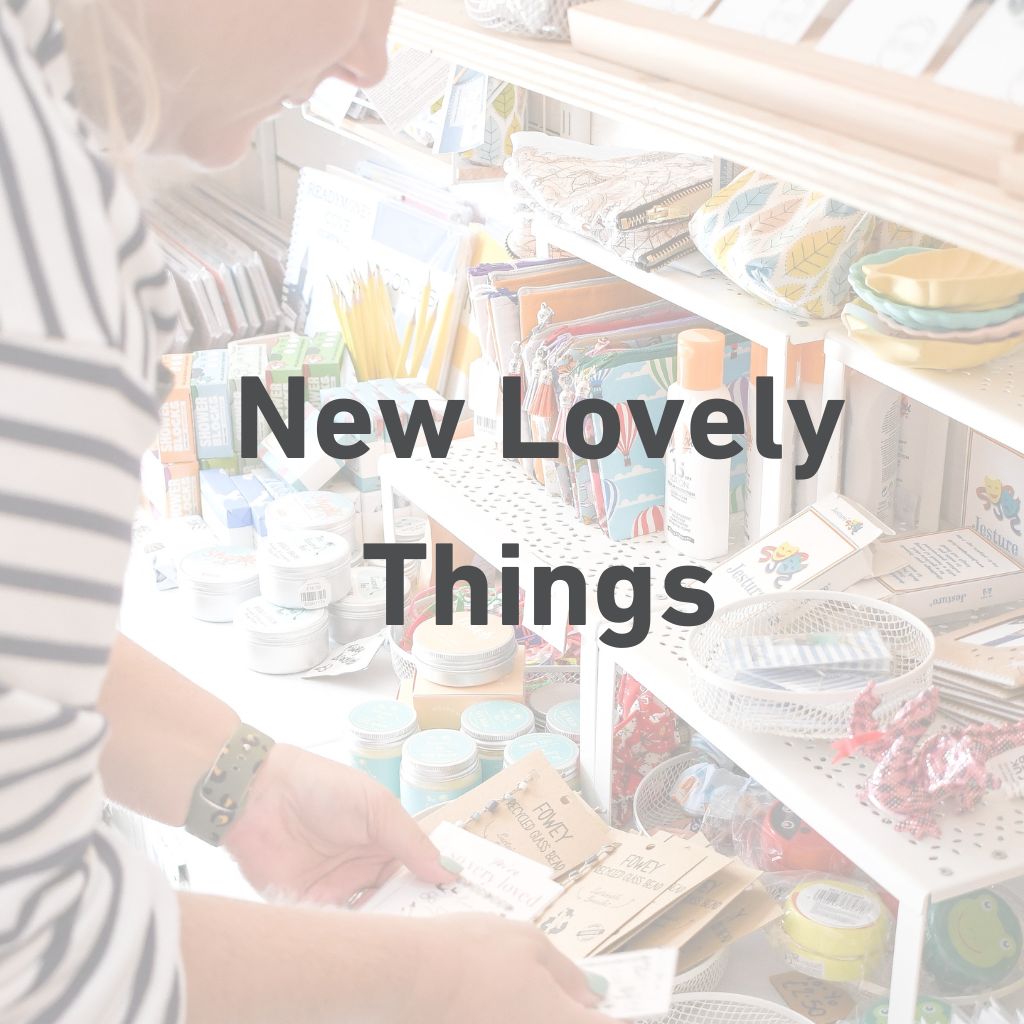
Wildlife at Readymoney Cove: Focus on Seals
Victoria ClarkShare
I recently met up at Readymoney beach with Judy Kirkham, our area volunteer for the Cornwall Seal Group Research Trust. Although the Fowey estuary doesn't host many seals there are still things that we do which impact their environment so it's important to raise awareness to keep these wonderful animals safe.

The two species of seal
Here in Fowey, the most likely place you'll see a seal is at low tide down towards Golant. When I've been out gig rowing we've sometimes seen the local seal, "Serena", hauled out on the sand bank (her predecessor Al is even featured on our Fowey River tea-towel and print!). Most of the seals spotted around the coast here in Cornwall are grey seals but Serena is a common seal, confusingly actually less common than the grey seals in the UK. Grey seals are globally rare, as they only exist in the north Atlantic so are a UK speciality species. Common seals, also known as harbour seals, are slightly smaller than grey seals with a shorter head and and more concave forehead. You'll often spot them resting in a "banana pose' with both head and tail up at the same time. Although both species of UK seals are protected, Common seals are also a Priority Species, identified as most under threat and in need of conservation action. Grey seals are a UK special responsibility species.
Grey seals are much more common here in Cornwall and if you're in Fowey, your best chance of spotting one is to head out on a Wildlife Safe Scheme wildlife seafari with our friends at Cornwall Seafari. You'll usually be lucky enough to spot grey seals hauled on the rocks around St Austell Bay and at some beaches, you might even see a curious face pop up through the waves! Their scientific name 'halichoerus grypus' means 'hook nosed sea pig' which I think is a pretty accurate description!

Seal encounters in the sea
Porthpean beach is known locally for inquisitive seals and that's where I had my own seal encounter a couple of years ago when swimming. My friend and I were heading back to the shore at the time and I'm not going to lie, it was quite terrifying seeing this big whiskery face pop up only a few feet in front of us. It was actually a couple of nearby paddleboards which had captured the seal's attention and it kept swimming underneath the boards, we had no idea where it was going to pop up next! The advice issued for seal encounters at sea is essentially to stay calm and still, keep your distance where possible and behave as little like a seal as possible! Where you can, aim to move slowly away from the seal and if in doubt get out. You can read more detailed advice here.
Safe seal watching
If you spot a seal on the shore, it is really important to give them space and ensure that they aren't disturbed. Seals need to haul out onto land in order to digest their food, rest, socialise and look after their young. Frightening them back into the water can be harmful as it affects their energy reserves and causes stress so always observe from a distance (at least 100m away) using your camera or binoculars. It should go without saying but NEVER attempt a seal selfie! Stay quiet, out of sight and preferably downwind, so that the seal can't hear you, see or smell you and keep dogs safely on leads. Discover more about best practice around seals here.
If you have any concerns about a seal in Cornwall please telephone BDMLR on 01825 765546. Sadly we do sometimes see dead seals washed up, these should be reported in Cornwall by telephoning 0345 201 2626.

Best practice for photographing seals
It is naturally quite exciting to see these amazing mammals in the wild but it is so important to remember that seals are wild animals with survival needs and instincts. Us humans must learn to live safely and considerately alongside seals who need to avoid inadvertently disturbing them and causing unseen harm. Did you know that if a seal is looking at you it has been disturbed and will immediately be on the alert.
As the the impacts of disturbance are often invisible and delayed, the Seal Research Trust no longer publishes or shares photos of seals looking at the camera and are phasing out photographs on public display where the seal is looking into the lens. This is a deliberate strategy to discourage people from deliberately disturbing seals to get a "good photo". A good photo is a relaxed seal, not looking at you and behaving naturally. It is particularly important not to share photographs of mums and pups in real time, or to reveal their location. The Trust also recommends only visiting sites where human access is managed safely.

Be seal safe
Clearly, leaving litter on the beach or throwing it into the sea is irresponsible at the best of times but there are certain items which can be particularly hazardous to seals. Flying ring discs are one such item, something we've not sold at the shop in many years but please never throw one of these on or near a beach as they can. get trapped around the neck of a seal, causing extreme discomfort and serious health issues (more information here). If you find one washed up on a beach please snap it in half and dispose of it responsibly. In fact any looped item can be hazardous to seals and other marine life, please always clear up after your beach visit and take your rubbish, including any broken items, home with you for safe disposal.
We do occasionally spot seals at Readymoney Cove but they tend to keep their distance and only appear when shoals of fish are ripe for snacking but this guidance is useful across Cornwall and indeed the whole of the UK. We are lucky to be able to enjoy such beautiful coastlines here in Cornwall but we must be prepared to share it with the native wildlife and offer them the respect they deserve. You can safely bring a seal into your home with our lovely embroidered seal decorationy, featuring a seal in a stripy t-shirt and sparkly crown!


